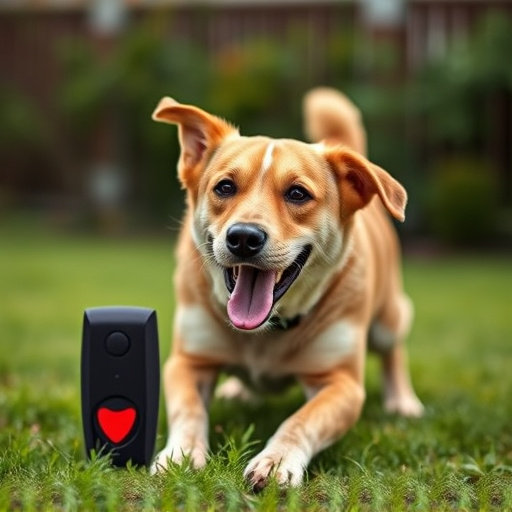Excessive dog barking is a growing neighborhood noise issue, causing stress for humans and animals. To combat this, developers have designed anti-barking devices with EMC Certification, ensuring they repel dogs humanely while meeting safe sound emission standards. These devices use methods like high-frequency inaudible sounds or repelling scents, but their effectiveness varies based on breed, training, and environment. Understanding the Dog Repellent EMC Certification Requirements is crucial for choosing a device that protects both dogs and humans, as certification guarantees safety and quality standards.
In many neighborhoods, dog barking has become a persistent noise pollution issue, disrupting peace and community harmony. This article explores an innovative solution: anti-barking devices designed to mitigate excessive canine noise. We delve into the science behind these tools, examining their effectiveness in managing dog behavior. Additionally, we shed light on the significance of EMC certification for dog repellents, ensuring both safety and quality standards in meeting the growing demand for effective yet humane solutions to this modern-day urban challenge.
- Understanding Dog Bark Noise Pollution and Its Impact on Neighborhoods
- Exploring Anti-Barking Devices: How They Work and Their Effectiveness
- Deciphering EMC Certification for Dog Repellents: Ensuring Safety and Quality
Understanding Dog Bark Noise Pollution and Its Impact on Neighborhoods
Dog barking is often seen as a nuisance, but it’s essential to understand that excessive noise from dogs can constitute pollution, affecting the quality of life in neighborhoods. In many areas, dog bark noise has become a growing concern, leading to complaints from residents and even legal actions. The constant, repetitive nature of dog barks can be disturbing, disrupting peaceful environments and causing stress for both humans and other animals nearby.
To address this issue, developers have created anti-barking devices designed to repel dogs humanely. These innovative solutions aim to reduce unwanted barking through various methods, ensuring they meet specific standards like EMC (Electromagnetic Compatibility) Certification Requirements. This certification guarantees that the devices emit safe levels of sound or other stimuli, minimizing potential harm to animals while effectively managing noise pollution.
Exploring Anti-Barking Devices: How They Work and Their Effectiveness
Anti-barking devices have emerged as a solution for managing canine noise, particularly in urban areas where dog ownership is high. These tools are designed to deter dogs from barking excessively without causing harm. The technology behind these devices varies, but they often utilize sound or scent as a deterrent. For instance, some emit high-frequency sounds inaudible to humans but irritating to dogs, while others release scents that repel them.
When considering anti-barking devices, it’s crucial to explore options with robust EMC (Electromagnetic Compatibility) certification to ensure they function optimally without interfering with other electronics or causing health issues. This certification guarantees the device operates within safe electromagnetic emission limits. Moreover, understanding the effectiveness of these tools involves recognizing that their success depends on factors like dog breed, training, and environmental conditions. Some dogs may be more responsive to certain types of repellents than others, so it’s essential to research and choose a device suitable for your neighborhood’s canine population.
Deciphering EMC Certification for Dog Repellents: Ensuring Safety and Quality
When considering an anti-barking device, understanding its Electromagnetic Compatibility (EMC) certification is vital. This ensures that the product meets stringent safety and quality standards, protecting both dogs and humans from potential harm. EMC certification checks for emissions and immunity to electromagnetic interference, guaranteeing that the device operates reliably without causing adverse effects.
The Dog Repellent EMC Certification Requirements vary by region but generally involve rigorous testing. These tests assess the device’s ability to function within specific frequency ranges without emitting harmful radiation. They also evaluate its resistance to external electromagnetic interference, ensuring it maintains accuracy and reliability in various environments. By adhering to these requirements, manufacturers demonstrate their commitment to producing safe and effective dog repellents.
In addressing neighborhood dog barking, anti-barking devices offer a promising solution. By understanding the impact of dog noise pollution and exploring various options, we can find effective repellents that respect both pet owners’ needs and community living. Looking beyond product effectiveness, it’s crucial to consider EMC certification as a guarantee of safety and quality, ensuring these devices enhance our living environments without causing further harm. Adhering to the Dog Repellent EMC Certification Requirements is a step towards peaceful coexistence for all.
